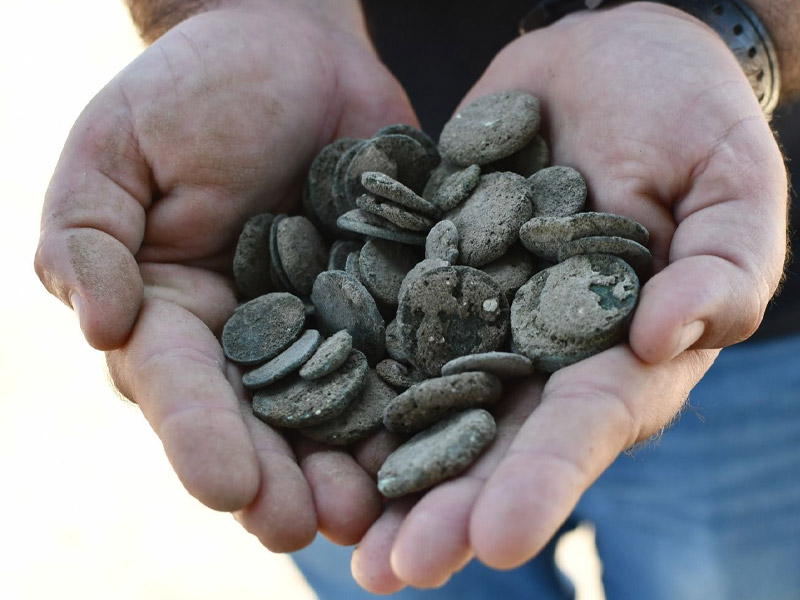A 1700-year-old hoard of silver coins from the last Jewish revolt of antiquity
Categories: Nálezy nejenom s detektorem na blízkém východě
In the ancient city of Lydda (today's Lod) near Tel Aviv, a rare silver treasure was discoveredand bronze coins from the period of the last Jewish revolt against Roman rule. The coins, dating from between 221 and 354, were found during excavations of the ruins of a public building dating from the late Roman and early Byzantine periods, the first evidence of a Jewish uprising in the city.
The newly discovered public building was destroyed during the last known Jewish revolt against Roman rule (knownknown as Gall's Revolt) under Flavius Claudius Constantius Gallus, who ruled the eastern provinces of the Roman Empire. In addition to the city of Lod, which was called Diospolis by the Romans, the cities of Tiberias and Sepphoris were also attacked: "It's basically an emergency treasure, meaning a depot that people hide in anticipation of a catastrophic event," Mor Viezel, an archaeologist with the Israel Antiquities Authority (IAA), explained, adding that the rebellion was brutally suppressed and the original owner was unable to retrieve his treasure.
Although the building was completely destroyed by the Romans, its surviving foundations "guarded" 94 silver and bronze coins dating from 221 to 354 AD for nearly 1,700 years. Many of the coins in the set were minted during the rebellion between AD 351 and 354. At that time, the Jews had been resisting Roman rule for several centuries. During the First Jewish War between 66-70 AD, the Romans destroyed the Second Temple and later crushed the resistance of the Jews fighting for an independent state during the Bar Kokhba Revolt (132-135 AD).
The excavations also unearthed impressive stone and marble artifacts with inscriptions in Greek, Hebrew and Latin. One inscription bearing the name of a Jewish man from a priestly family is still being examined. These inscriptions, combined with the complete absence of pig bones in the assemblage of bones uncovered at the site, demonstrate the building's association with the Jewish community. However, the exact purpose of the building before its destruction remains unclear.
"It is difficult to determine whether this magnificent building served as a synagogue, a study hall, a meeting hall for elders, or whether it fulfilled all three functions at once," said Professor Joshua Schwartz, head of the Israel Antiquities Authority's board. "What is certain, however, is that the size of the building, the coin depot and the collection of archaeological finds, fit well with the description of Lod in both Jewish and non-Jewishsources as the center of Jewish life during the Torah, Mishnah and Talmudic periods," he said, adding that it is the first urban evidence of a Jewish revolt against Gallo's rule.
Roman Nemec
Sources: archaeology.org, livescience.com, gov.il
 A set of coins after being retrieved from the foundation of a demolished ancient building
A set of coins after being retrieved from the foundation of a demolished ancient building
 detail of some of the treasure coins
detail of some of the treasure coins
 coins of the Jewish treasure
coins of the Jewish treasure
 Remains of the Jewish building of ancient Lod under a modern development
Remains of the Jewish building of ancient Lod under a modern development
 detail of the exposed foundations
detail of the exposed foundations
The article is included in categories: